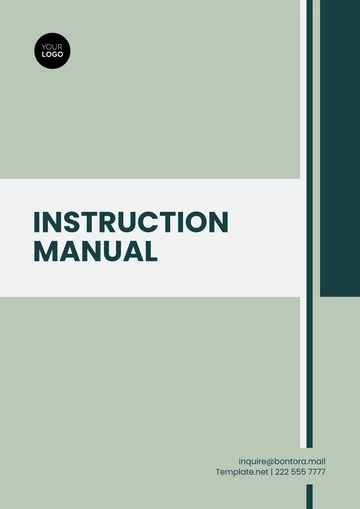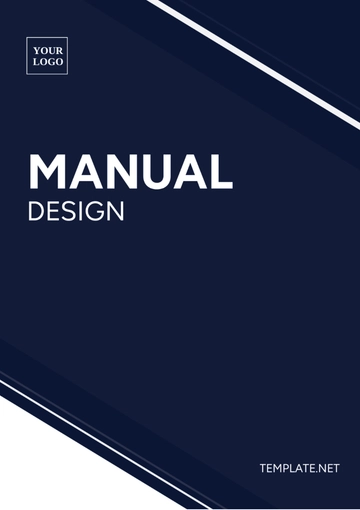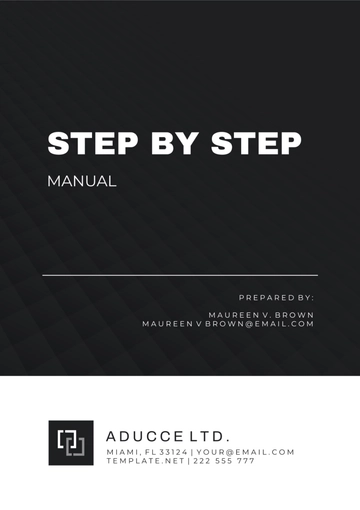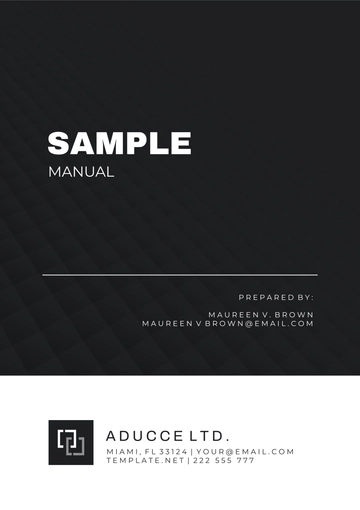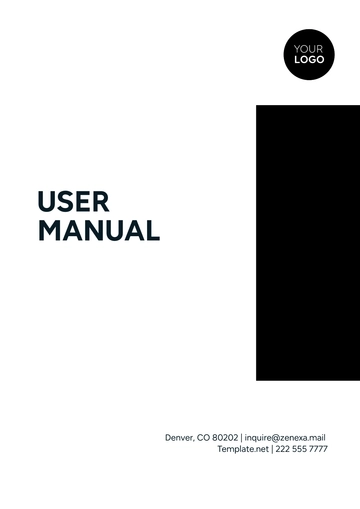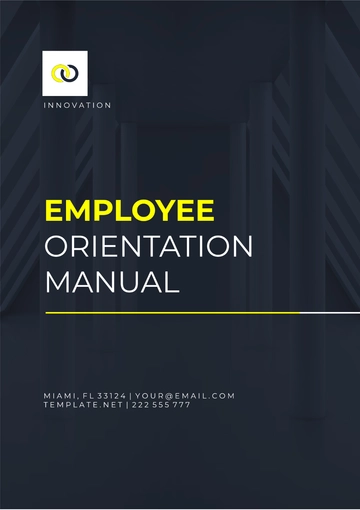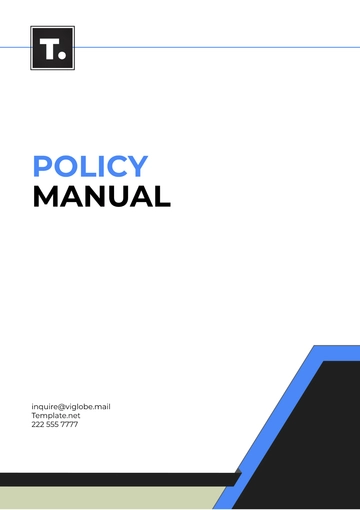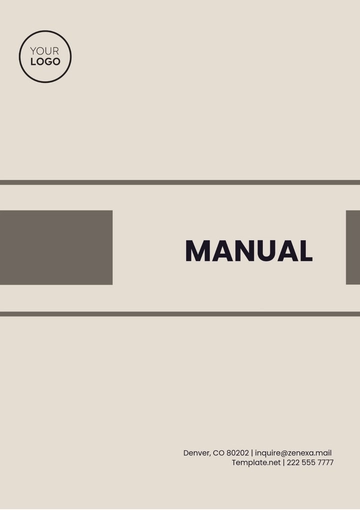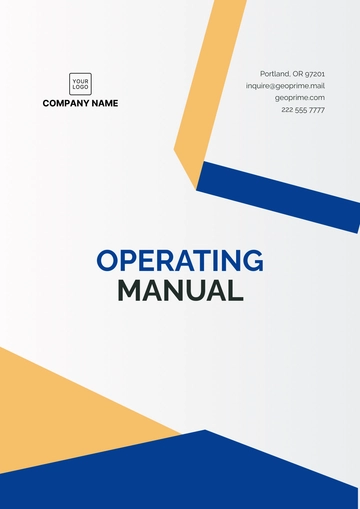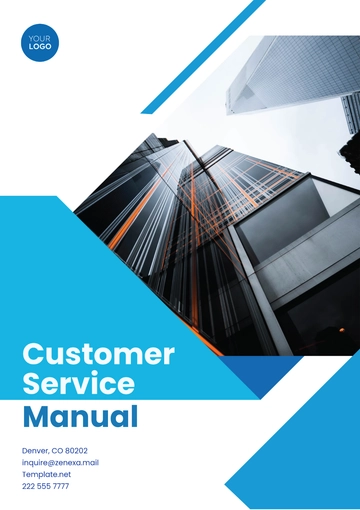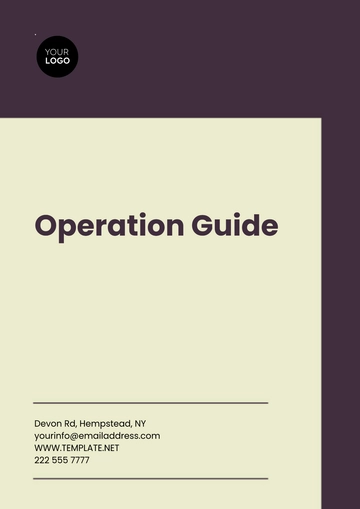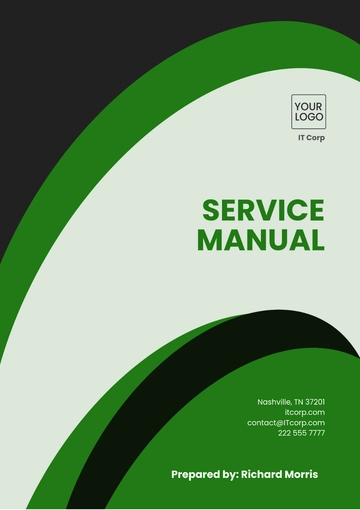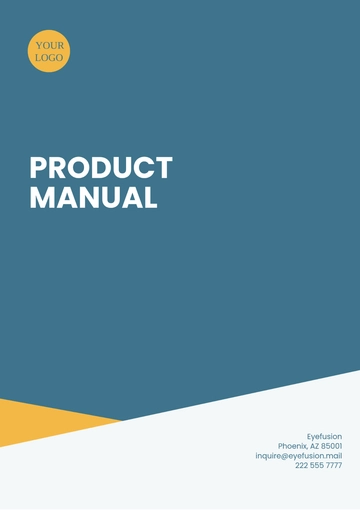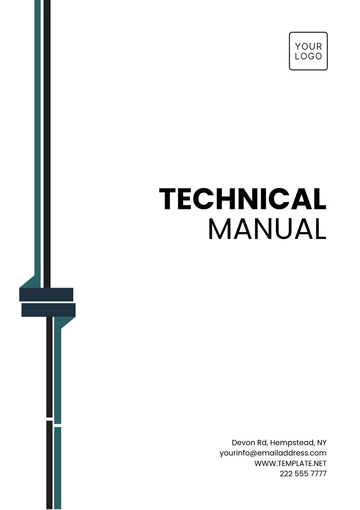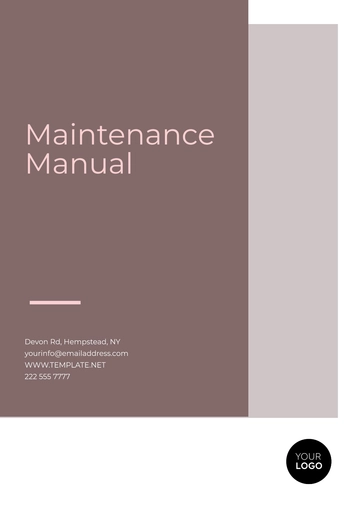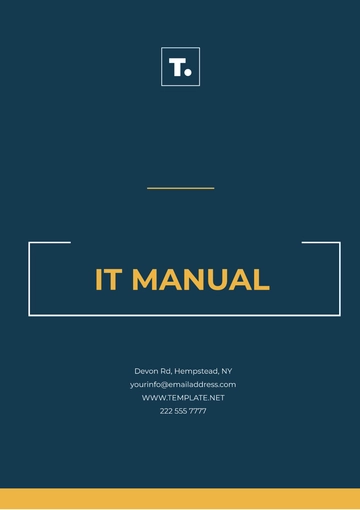Free Financial Compliance Audit Manual
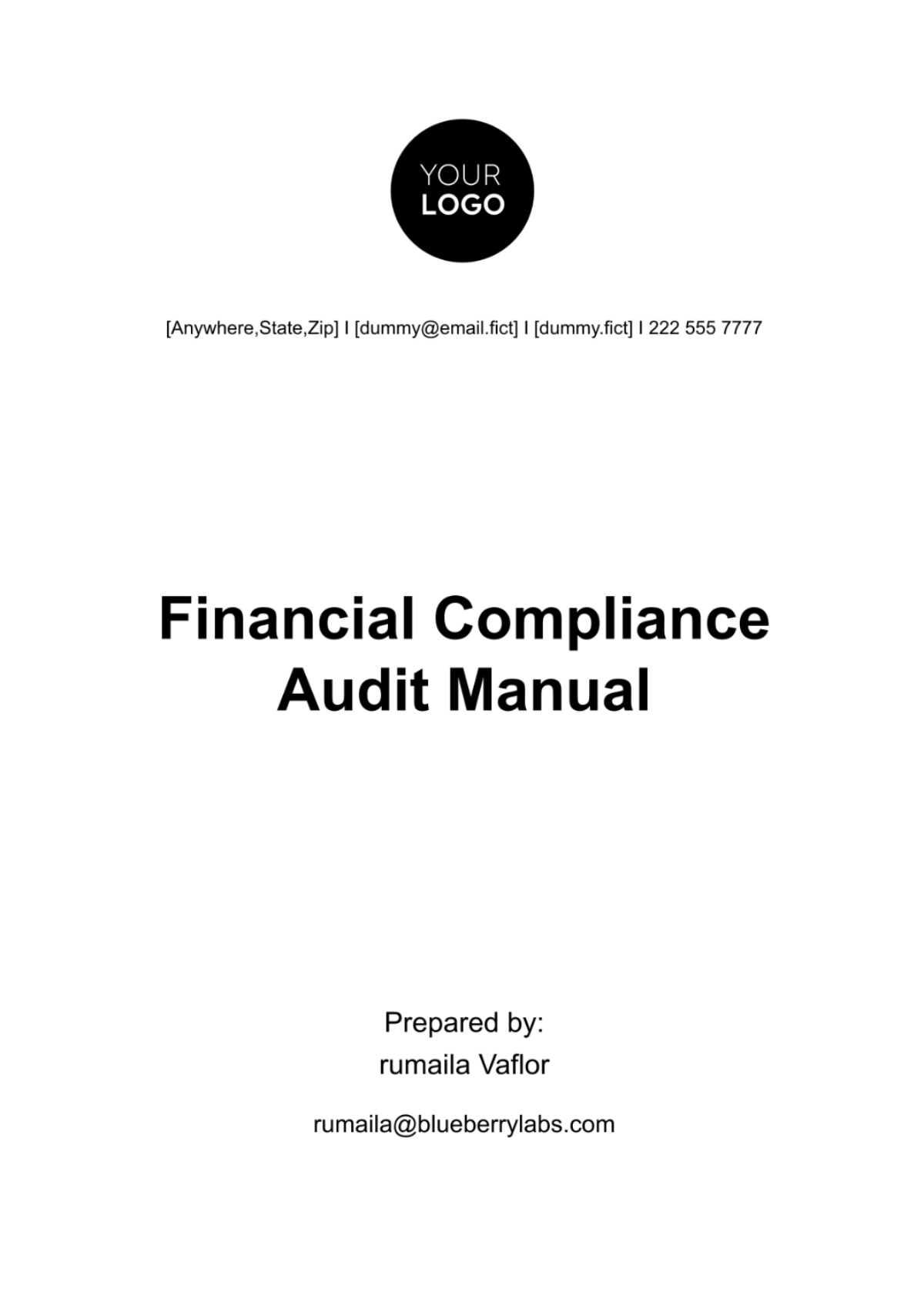
Table of Contents
Introduction and Overview
Regulatory Framework
Audit Objectives and Scope
Roles and Responsibilities
Audit Methodology
Risk Assessment and Management
Documentation and Evidence
Audit Findings and Reporting
Corrective Actions and Follow-Up
Review and Improvement of Audit Process
1. Introduction and Overview
This Financial Compliance Audit Manual serves as a comprehensive guide for conducting rigorous and effective financial compliance audits within [Your Company Name]. It is designed to ensure strict adherence to the complex web of financial regulations and laws that govern the industry in the United States. The manual's primary objective is to aid in identifying and mitigating risks associated with non-compliance, thereby safeguarding the financial integrity and reputation of the organization.
This manual outlines standardized procedures and best practices, ensuring uniformity and thoroughness in the audit process. It covers various aspects of financial operations, from internal controls to regulatory reporting. The guidelines within are periodically updated to reflect the latest changes in U.S. financial laws and industry standards. This document is an indispensable tool for auditors, compliance officers, and management in maintaining the highest standards of financial compliance.
2. Regulatory Framework
This section details the federal laws and regulations that govern the financial sector, such as the Sarbanes-Oxley Act (SOX), Dodd-Frank Wall Street Reform and Consumer Protection Act, and the Bank Secrecy Act. It emphasizes the need for compliance with these regulations, highlighting their implications on financial reporting and internal controls.
State and Local Regulations
Addresses specific financial compliance requirements that vary by state and locality. This includes state-specific banking regulations, insurance laws, and securities regulations. It is crucial for entities operating in multiple states to be aware of and adhere to these diverse regulatory environments.
International Standards
For companies operating globally, this subsection outlines relevant international financial compliance standards like the International Financial Reporting Standards (IFRS) and Basel III regulations. It discusses the importance of aligning with these standards to maintain global financial integrity and cross-border compliance.
Industry-Specific Regulations
Covers regulations unique to specific sectors within finance, such as investment banking, insurance, or mortgage lending. This includes guidelines from bodies like the Financial Industry Regulatory Authority (FINRA) and the Securities and Exchange Commission (SEC).
Compliance with Anti-Money Laundering (AML) and Counter-Terrorist Financing (CTF) Laws
Focuses on the importance of complying with AML and CTF laws, including the Patriot Act. It guides on identifying and reporting suspicious activities to prevent money laundering and terrorism financing.
3. Audit Objectives and Scope
The primary objective of this audit is to meticulously evaluate [Your Company Name]'s adherence to the myriad of financial laws and regulations that govern our operations. By thoroughly examining our practices, this audit aims to ensure that we are not only compliant with legal mandates but also align with industry best practices. This comprehensive review extends to all facets of our financial dealings, ensuring complete legal and ethical integrity in our operations.
Furthermore, the scope of this audit encompasses a detailed assessment of our internal control systems and compliance procedures. This involves a rigorous examination of the mechanisms in place for financial reporting, risk management, and regulatory adherence. The audit will scrutinize the effectiveness of these controls in detecting and mitigating potential compliance risks, thereby reinforcing the robustness of our financial operations against legal and regulatory challenges.
4. Roles and Responsibilities
In ensuring the success of the Financial Compliance Audit, clear delineation of roles and responsibilities is crucial. This section outlines the key stakeholders involved in the audit process and their respective duties. Understanding these roles ensures accountability and efficient execution of the audit.
Stakeholder | Responsibilities |
|---|---|
Audit Committee | Oversight of the audit process, ensuring compliance with legal standards and company policies. |
Internal Auditors | Conducting the audit, documenting findings, and ensuring thorough examination of financial practices. |
Compliance Officer | Facilitating the audit, advising on regulatory requirements, and implementing recommendations. |
Management Team | Providing necessary information and support, and ensuring implementation of audit recommendations. |
External Auditors (if applicable) | Providing an independent assessment, ensuring objectivity and compliance with external regulations. |
5. Audit Methodology
The audit methodology outlines the systematic approach employed in conducting the financial compliance audit. This structured process ensures a comprehensive and effective evaluation, covering every critical aspect of financial compliance. The methodology is divided into distinct phases, each crucial for a thorough and objective audit.
Planning and Preparation
Execution
Analysis and Evaluation
Reporting
Follow-Up
6. Risk Assessment and Management
Risk assessment and management are pivotal in the financial compliance audit process. This section outlines a five-step procedure designed to identify, assess, and effectively manage financial compliance risks. It is a proactive approach to anticipate and mitigate potential issues that could impact the company's financial and regulatory standing.
Five-Step Risk Assessment and Management Procedure
Risk Identification: Identify potential compliance risks through a review of financial processes, past audits, and changes in regulatory requirements.
Risk Analysis: Evaluate the likelihood and potential impact of identified risks. This involves understanding the consequences of risk occurrence and its significance to the company.
Risk Prioritization: Prioritize risks based on their potential impact and likelihood. This helps in allocating resources and attention to the most significant risks first.
Risk Mitigation Strategy: Develop strategies to mitigate identified risks. This includes implementing controls, revising procedures, or introducing new policies to reduce the likelihood or impact of these risks.
Monitoring and Review: Regularly monitor the effectiveness of risk management strategies and review them for improvements. This is an ongoing process to ensure continued compliance and adapt to new regulatory changes.
7. Documentation and Evidence
Proper documentation and evidence collection are fundamental to the integrity of the financial compliance audit. This phase involves meticulously recording audit procedures, findings, and conclusions. It is essential to maintain organized, accurate, and comprehensive records, including financial statements, transaction logs, communication records, and compliance reports. These documents serve as the foundation for audit conclusions, providing tangible proof of compliance practices and any deviations.
Additionally, the evidence must be reliable, relevant, and sufficient to support audit findings. Auditors should ensure that all evidence is gathered in a manner that upholds its validity and authenticity. This includes ensuring proper authorization, chronological tracking, and safeguarding sensitive information. The collated documentation not only substantiates the audit results but also provides a clear trail for future audits and potential regulatory scrutiny.
8. Audit Findings and Reporting
The Audit Findings and Reporting section is crucial in conveying the outcomes of the audit process. It involves a structured approach to document, analyze, and communicate the findings effectively. This section is vital for transparency and for guiding future actions based on the audit results. The five-step procedure ensures clear, comprehensive, and actionable reporting.
Procedure for Audit Findings and Reporting
Compilation of Findings: Gather all audit findings, including instances of non-compliance, weaknesses in internal controls, and other pertinent observations.
Analysis of Findings: Analyze the findings to understand their implications on financial compliance. This includes assessing the severity of issues and their potential impact on the organization.
Drafting the Audit Report: Prepare a detailed audit report that includes a summary of findings, an analysis of the implications, and recommendations for improvement. The report should be clear, concise, and structured for easy understanding.
Review and Approval: The draft report is reviewed by senior auditors and relevant stakeholders for accuracy and completeness. Necessary revisions are made before final approval.
Communication and Distribution: The final audit report is communicated to key stakeholders, including the management team and the audit committee. The report should be distributed in a secure and confidential manner, ensuring that sensitive information is protected.
9. Corrective Actions and Follow-Up
This section is pivotal in ensuring that the insights gained from the financial compliance audit are translated into tangible improvements. It outlines a structured five-step process for implementing corrective actions and conducting follow-ups. This approach ensures not only the resolution of identified issues but also the ongoing enhancement of financial compliance practices.
Process for Corrective Actions and Follow-Up
Identification of Required Actions: Pinpoint specific areas needing improvement based on audit findings, and determine the necessary corrective actions.
Action Plan Development: Develop a detailed action plan, assigning responsibilities, setting timelines, and defining clear objectives for each corrective measure.
Implementation of Actions: Execute the action plan, ensuring that all corrective measures are carried out effectively and in accordance with the set timeline.
Monitoring and Reporting: Continuously monitor the implementation process, providing regular updates to management and stakeholders on the progress of corrective actions.
Post-Implementation Review: Once actions are implemented, conduct a review to assess their effectiveness and ensure that the identified issues have been adequately addressed. Adjust the plan as necessary for continuous improvement.
10. Review and Improvement of Audit Process
The Review and Improvement of the Audit Process is an essential final step, ensuring the continuous enhancement of auditing practices. This involves critically assessing the audit methodology, execution, and findings to identify areas for improvement. Feedback is gathered from all stakeholders involved, and lessons learned are integrated into future audits. This cyclical process fosters a culture of continuous improvement and adaptability, crucial for maintaining the highest standards of financial compliance and audit efficiency.
- 100% Customizable, free editor
- Access 1 Million+ Templates, photo’s & graphics
- Download or share as a template
- Click and replace photos, graphics, text, backgrounds
- Resize, crop, AI write & more
- Access advanced editor
Elevate your audit process with Template.net's Financial Compliance Audit Manual Template. Expertly crafted, this template is fully editable and customizable, ensuring a perfect fit for your company's needs. With the added convenience of being editable in our Ai Editor Tool, it's the ideal solution for meticulous financial compliance.
